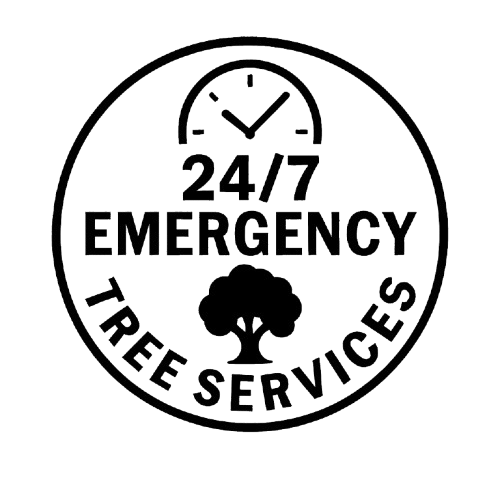Urban trees play a crucial role in New York City’s landscape, contributing to environmental health, enhancing aesthetics, and providing essential benefits such as shade and air purification. However, snow removal operations during winter can significantly threaten these valuable assets. Heavy snow, deicing chemicals, and the use of large machinery often result in physical and chemical damage to trees. Protecting trees during snow removal operations is vital to maintain the city’s greenery and ensure long-term urban sustainability. By adopting proactive measures, residents and city services can safeguard trees while keeping streets and sidewalks clear of snow.
Key Takeaways:
- Physical and Chemical Damage from Snow Removal: Trees risk physical harm from snowplows and machinery and chemical damage from deicing salts. Snow removal operations can result in broken branches, root damage, and salt contamination, negatively affecting a tree’s health.
- Best Practices for Tree Protection: Installing tree guards, avoiding snow piles around tree bases, and using eco-friendly deicers are effective strategies for preventing tree damage during snow removal. These practices help mitigate the impact of both machinery and chemical exposure.
- Collaborative Efforts are Key: The cooperation between residents, local businesses, and city services is essential in ensuring tree protection during snow removal. Public awareness campaigns and city initiatives can help reduce tree damage and contribute to healthier, more resilient urban forests.
Common Challenges Faced by Trees During Snow Removal
Physical Damage from Snowplows
One of the most common threats to trees during snow removal operations in urban environments like New York City is the physical damage caused by snowplows and heavy machinery. The large equipment used to clear streets and sidewalks often inadvertently comes into contact with tree trunks and branches, causing substantial damage. Snowplows may break off low-hanging branches, while tree trunks can get scraped or dented by machinery, exposing the tree to further health risks such as disease and insect infestation. Additionally, tree roots near the ground’s surface can be damaged as plows scrape away layers of snow and soil, leaving roots exposed and vulnerable.
Chemical Damage from Salt and Deicing Agents
Another significant challenge trees face during snow removal operations is chemical damage caused by deicing agents. Traditional deicing salts, such as sodium chloride, are commonly used to prevent ice buildup on streets and sidewalks. However, these salts can be toxic to trees, mainly when runoff from melting snow carries the chemicals into the soil around the base of trees. Over time, salt buildup can cause dehydration of tree roots by drawing water away from them. This results in weakened tree health, stunted growth, and severe tree death. The impact is especially pronounced in young trees or species sensitive to salt exposure.
Compaction of Soil
In addition to physical and chemical damage, soil compaction is another challenge trees face during snow removal operations. The constant use of heavy machinery, combined with snow piling around tree bases, leads to soil compaction. When soil compacts, it reduces the oxygen available to tree roots, essential for healthy growth and nutrient absorption. Soil compaction impedes water infiltration, making it harder for trees to access the moisture they need to survive. Over time, compacted soil can significantly weaken a tree’s root system, increasing its vulnerability to other environmental stressors.
Best Practices for Tree Protection During Snow Removal
Protecting trees during snow removal operations requires proactive measures to help reduce physical and chemical damage. Here are some of the most effective practices for ensuring that urban trees remain safe during the winter months:
Installation of Tree Guards
Installing tree guards is one of the most straightforward and effective methods of protecting trees from damage during snow removal. These guards, often made of metal or wood, wrap around the tree’s base, shielding the trunk from contact with snowplows and other machinery. Properly installed guards can prevent scraping or denting of tree trunks, which could expose them to disease or pests.
How to Install Tree Guards:
- Measure the circumference of the tree trunk to determine the appropriate size of the guard.
- Ensure that the guard is tall enough to protect the entire base of the tree, up to 4-5 feet in height.
- Secure the guard firmly into the ground, leaving enough space between it and the tree trunk for natural growth.
- Use weather-resistant materials that can withstand the harsh conditions of winter.
Marking Trees with Flags or Reflectors
One simple yet effective way to prevent accidental collisions with trees during snow removal is to mark trees with flags or reflectors. Snowplow operators often work in low-visibility conditions, especially during heavy snowfall, so making trees more visible can reduce the risk of damage.
Steps for Marking Trees:
- Attach bright-colored flags or reflective tape around the tree trunks.
- Place the flags at a visible height to machinery operators (typically 5-6 feet off the ground).
- In addition to marking trees, install reflectors along the perimeter of areas with dense tree growth.
Avoid Piling Snow on Tree Roots
Snow piling around tree roots is a significant cause of soil compaction, which limits the tree’s access to oxygen and water. Ensuring that snow is not pushed or piled around the base of trees is critical to preserving their health during the winter.
Strategies to Prevent Snow Piling:
- Instruct snow removal crews to clear snow away from the base of trees rather than pushing it towards them.
- Place physical barriers around trees, such as low fences or snow fencing, to redirect the snow piles.
- Use manual snow removal methods for areas directly surrounding trees, reducing the likelihood of snow compacting around tree roots.
Best Practices for Tree Protection
|
Best Practice |
Description |
Benefit |
|
Installation of Tree Guards |
Place metal or wooden guards around tree trunks to shield them from snowplows and machinery. |
It protects trunks from physical damage, such as scraping or denting, which can lead to disease or pest infestation. |
|
Marking Trees with Flags/Reflectors |
Use bright-colored flags or reflective tape to make trees visible to snow removal crews during low-visibility conditions. |
It reduces the risk of accidental collisions, helping snowplow operators avoid hitting trees and damaging branches or trunks. |
|
Avoid Piling Snow on Tree Roots |
Prevent snow removal crews from piling snow around the base of trees, which can compact soil and damage roots. |
Preserve soil health by preventing compaction, allowing tree roots to access oxygen and water, and minimizing long-term damage. |
Using Alternative Snow Removal Techniques
Eco-Friendly Deicers
Traditional deicing agents like sodium chloride can significantly damage trees and the surrounding environment. Fortunately, eco-friendly alternatives provide safer options for melting ice without compromising tree health.
Common Eco-Friendly Deicers:
- Calcium Magnesium Acetate (CMA): A biodegradable option that is less corrosive and harmful to vegetation. It works effectively at lower temperatures without harming tree roots or soil.
- Beet Juice-Based Deicers: Made from beet juice mixed with salt brine, these deicers are more environmentally friendly and reduce the salt needed for ice control.
- Sand or Gravel: While not true deicers, sand or gravel increases traction on icy surfaces without harming nearby trees.
Manual Snow Removal
Manual snow removal can be a gentler alternative to mechanical snowplows in areas with susceptible trees. Although it may not be practical for large-scale operations, it is ideal for smaller, more delicate spaces like parks or tree-lined streets.
Benefits of Manual Snow Removal:
- Avoiding Heavy Machinery: Hand tools like snow shovels or push brooms allow workers to clear snow without the risk of damaging tree roots, trunks, or branches.
- Precision in Snow Clearing: Manual removal allows workers to carefully clear snow around trees without creating piles that can lead to soil compaction or root damage.
Plow Guidelines for Tree-Sensitive Areas
Snowplow operators can follow specific guidelines to minimize damage to trees in areas where heavy machinery is necessary. These regulations can help reduce accidental harm while maintaining clear streets and sidewalks.
Key Guidelines Include:
- Maintain a Safe Distance: Plows should avoid coming too close to tree trunks, and operators should avoid tree roots where possible.
- Slow Speed Zones: Reducing plow speed can prevent accidental collisions with low-hanging branches or trunks in dense tree populations.
- Limit Snow Piling: Operators should avoid piling snow directly around the base of trees to prevent soil compaction and other harmful effects.
Tree Health After Snow Removal Operations
Inspecting for Damage
After snowstorms and snow removal activities, inspecting trees for physical injuries is essential. Broken branches, wounds on the bark, and damage to tree roots should be identified and addressed promptly.
Steps for Inspection:
- Check for Broken Branches: Heavy snow or equipment contact may break branches, leading to disease or further damage if not removed.
- Look for Bark Scrapes: Scraped or dented bark may expose the tree to pests or diseases. Early detection allows for immediate treatment.
- Root Health Evaluation: Roots exposed or damaged by snowplows or snow piling need attention to prevent long-term harm.
Tree Health Recovery Measures
If trees have suffered from chemical exposure, soil compaction, or physical injuries, a few recovery measures can help restore their vitality.
Recovery Techniques:
- Mulching: Applying mulch around the tree’s base helps maintain moisture, protect roots from further compaction, and insulate the soil.
- Fertilization: A slow-release, nutrient-rich fertilizer can help trees regain their strength and health and repair damage from salt exposure.
- Watering: Regular watering, particularly in spring, can help flush out any residual salt in the soil and hydrate trees suffering from drought conditions caused by deicing agents.
Collaborative Efforts for Tree Safety
Public Awareness Campaigns
Public involvement plays a crucial role in tree protection during snow removal operations. Informing residents and businesses about tree safety can reduce accidental damage and encourage responsible snow clearing.
Campaign Focus Areas:
- Proper Use of Deicers: Educating people about eco-friendly alternatives and the dangers of traditional salt-based products helps reduce tree chemical damage.
- Avoiding Snow Piles Around Trees: Residents should be informed to avoid piling snow around tree bases, which can cause root suffocation and soil compaction.
- Reporting Tree Damage: Encouraging the public to report damaged trees allows for quicker response and treatment, helping to prevent further harm.
City Initiatives and Programs
Local government initiatives can protect trees by providing guidelines and programs emphasizing eco-friendly snow removal and tree safety training.
Examples of City Programs:
- Eco-Friendly Snow Removal Guidelines: City agencies can issue guidelines for snow removal crews, emphasizing safer deicing products and tree-sensitive plow techniques.
- Tree Protection Training: Specialized training for snow removal operators on avoiding tree damage can significantly reduce incidents of physical harm to urban trees.
- Incentives for Eco-Friendly Practices: Offering incentives to residents and businesses that use eco-friendly deicers or practice tree-safe snow clearing can encourage wider adoption of these methods.
FAQs
Why are trees particularly vulnerable during snow removal operations?
Trees are vulnerable to heavy machinery, salt, and snow buildup, which can damage branches, trunks, and roots.
What are eco-friendly alternatives to traditional deicing salts?
Eco-friendly alternatives include calcium magnesium acetate and beet juice-based deicers, which are less harmful to trees and the environment.
How can I help protect the trees in front of my home during snowstorms?
You can place tree guards, avoid piling snow on tree roots, and use less harmful deicers like sand or eco-friendly products.
What should I do if I notice tree damage after snow removal?
If you see broken branches or damage, contact NYC’s tree care services or engage a licensed arborist to examine and tend to the tree.
Are there specific guidelines NYC uses to protect trees during snow removal?
The NYC Parks Department provides guidelines for snow removal crews, including recommended plowing distances from trees and eco-friendly deicing practices.
Conclusion
Safeguarding trees during snow removal operations is essential for maintaining the health and longevity of New York City’s urban landscape. The harm that winter snow removal operations create can be significantly decreased by combining physical protection measures, including building tree guards and utilizing environmentally friendly deicing solutions, with public awareness campaigns and city-led programs. By emphasizing tree safety, we ensure that these critical aspects of our environment continue to grow, offering shade, beauty, and environmental benefits for decades. Collaborative efforts between citizens, businesses, and city agencies are essential to preserving the greenery that distinguishes New York’s urban life, even during the severe winter months.




